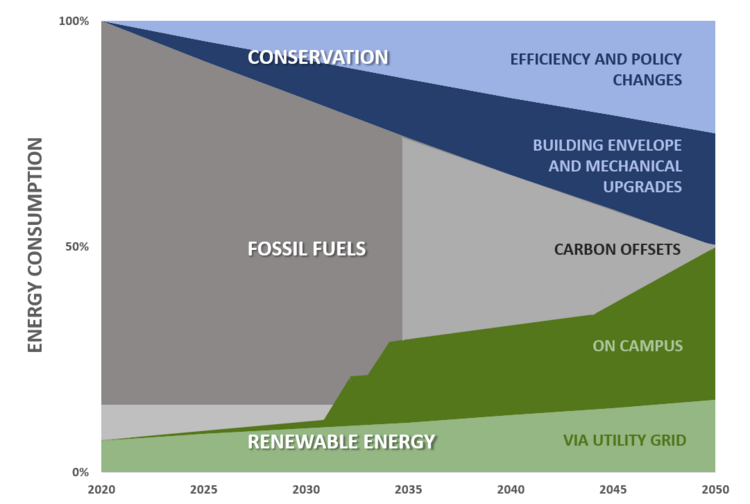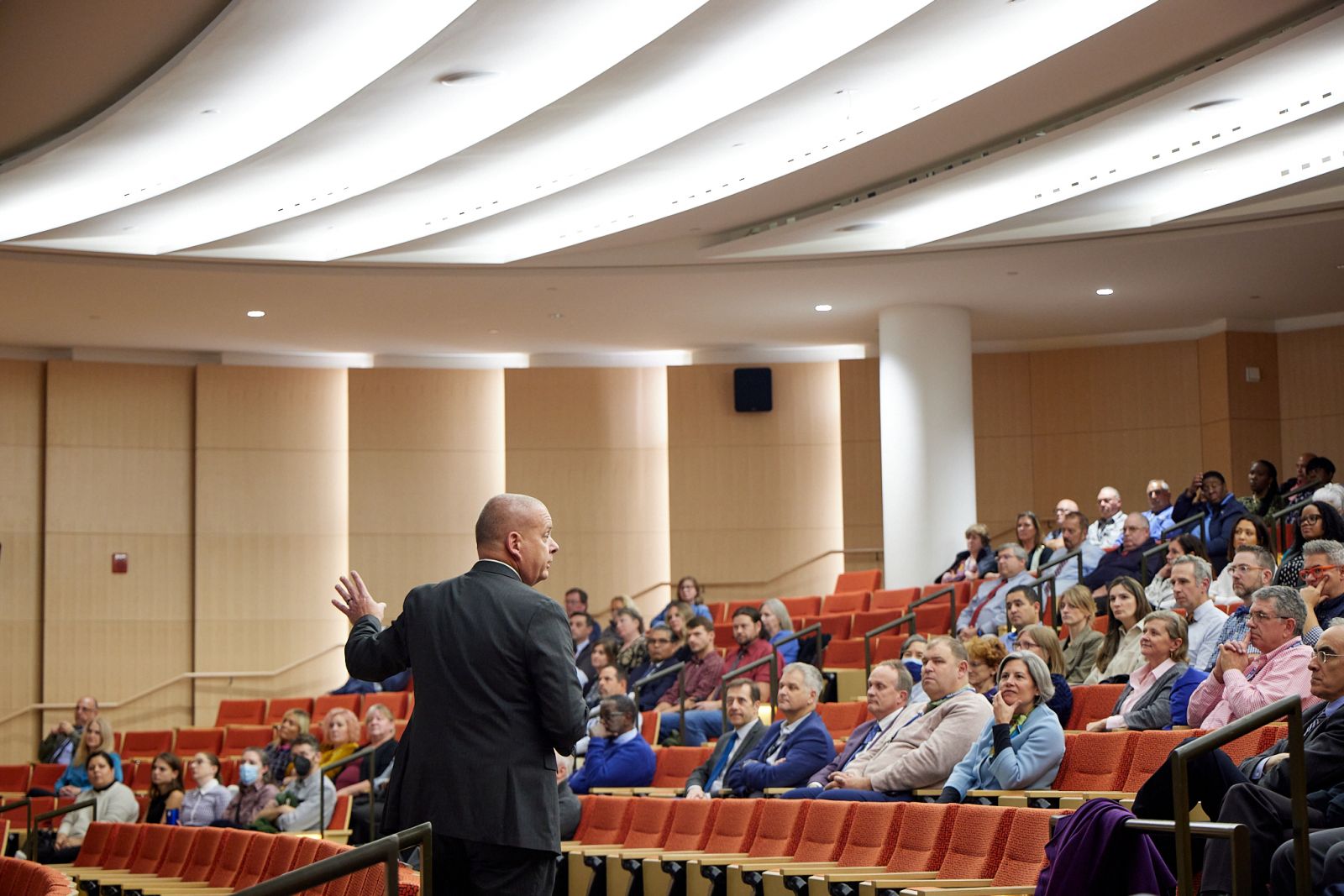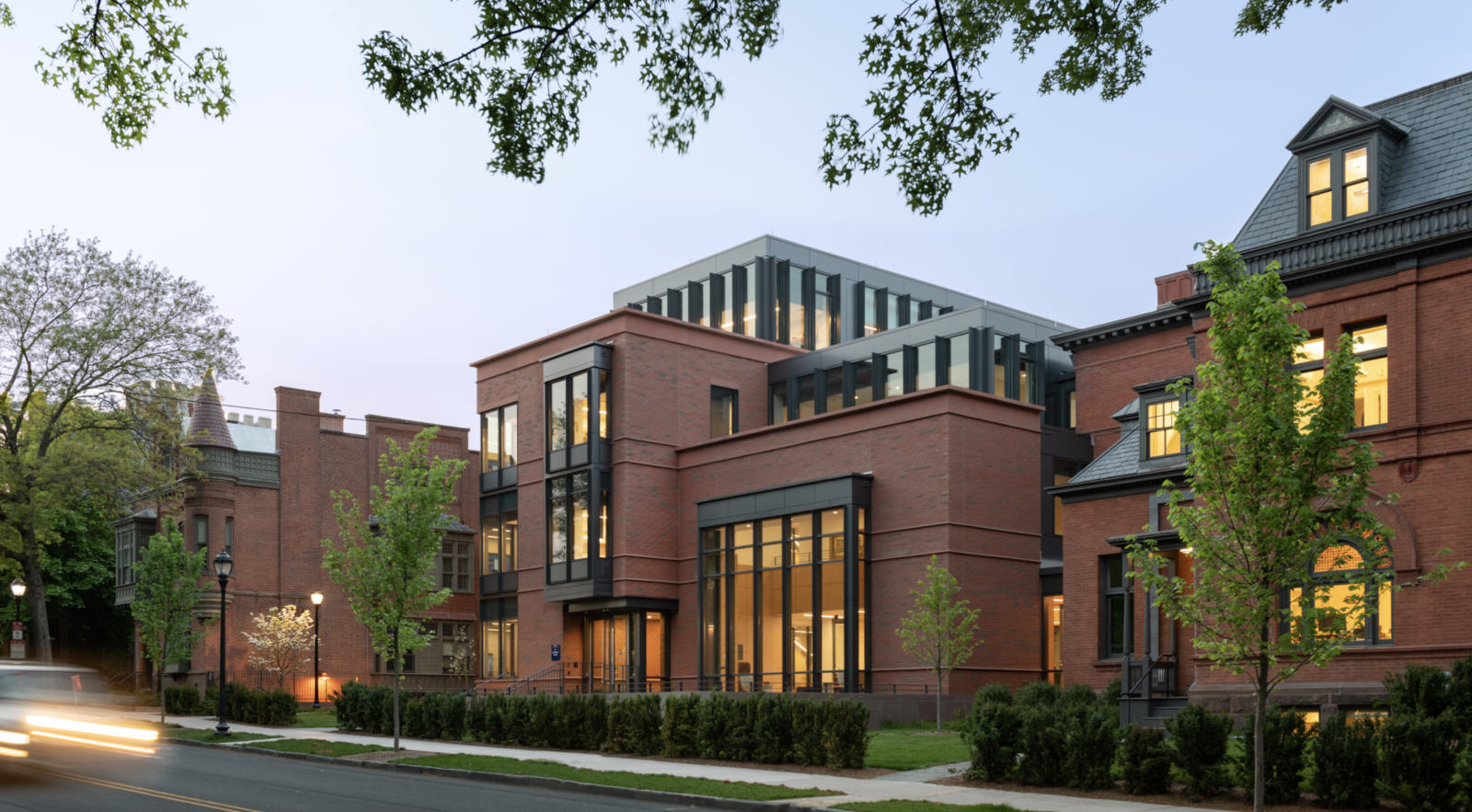
Yale is preparing for a future where every building on campus will be highly energy efficient and capable of meeting its needs for heating, cooling, and electricity without the use of fossil fuels.
The university calls this approach ‘zero carbon ready.’
The standard, officially adopted by Yale in 2022, reflects the urgency of the climate crisis and the international scientific consensus around the need to decarbonize the world economy by midcentury.
Harnessing technology that is available today, the university is undertaking energy and building projects that will transform the built environment at Yale—in ways seen and unseen—and provide a roadmap for reaching its goal of reducing campus emissions to zero no later than 2050.
Drawing from LEED and other sustainable design standards, Yale created ‘zero carbon ready’ to be aggressive, flexible, and tailored to the university’s unique campus infrastructure and programmatic needs.
“We wanted a building standard that would challenge every project at Yale to play a role in reaching our decarbonization goals,” says Anthony Kosior, Yale’s associate vice president for Facilities and Campus Stewardship. “Not every new or renovated building can completely eliminate fossil fuels on day one. But every project can do something to be ready for the day when clean energy is delivered to the building.”
“Use Less Energy, Use Renewable Energy”
For the past century, Yale has heated, cooled, and electrified campus using a “district” approach. Centralized energy plants burn natural gas to generate and supply steam and electricity to campus buildings. The university supplements self-generated power with electricity purchased from the regional power grid, and increasingly with onsite renewable power such as the 1.34-megawatt West Campus solar array.
Yale’s zero-carbon-ready approach relies on a combination of strategies all working together: aggressive energy conservation through efficiency upgrades and policy changes; new sources of renewable energy and buildings that are prepared to operate on that clean power; a greener Connecticut power grid; and finally “energy persistence”—effective operations and maintenance of campus buildings while using advanced analytics software to maintain energy savings over time.
Under this plan, the university will maintain its district approach to supplying energy, but with centralized geothermal plants and electric heat pumps moving Yale away from fossil fuel-generated systems.

In the simplest terms, this approach could be described as “use less energy, use renewable energy, and sustain the savings,” explains Kosior.
In the coming decades, a combination of targeted strategies will steadily reduce Yale’s reliance on fossil fuels. Renovations to achieve energy efficiency will be made as part of the renewal and investment cycles in Yale’s capital plan, as determined by the needs of programs and infrastructure. Aggressive energy policies and upgrades to mechanical systems will provide additional energy savings. And the construction of two new geothermal plants and new solar arrays will expand renewable power generation on campus.
“Achieving our climate goals will require deploying a combination of strategies as well as being open to future opportunities and new technology solutions,” says Kosior. “While we continue to track disruptive technologies, what is available to us now are heat pumps that efficiently transfer energy between buildings and the earth by balancing simultaneous heating and cooling loads and storage through geothermal boreholes. That is what propels our zero-carbon approach.”

Transforming Yale’s Built Environment
Buildings are a major contributor to global warming and are responsible for nearly 40% of global emissions—28% from the energy needed to heat, cool, and power them, and 11% from materials and construction. Reversing that trend will require a rapid transition in how energy is generated and consumed, as well as building design and construction.
At Yale, the zero-carbon-ready standard is guiding an energy transition that is already well underway. Beginning in March 2022, zero carbon ready became the official standard for all new building and renovation projects on campus.

In January 2023, Yale opened a new zero-carbon-ready building at 87 Trumbull St., home to the Department of Economics and Tobin Center for Economic Policy— that runs entirely on electric-powered heat pumps. The university is also planning to build two new geothermal plants—one on Science Hill, another on lower Hillhouse Avenue—to provide a renewable source of thermal energy for electrified heating and cooling systems.
The Living Village project at Yale Divinity School—part of the ambitious Living Building Challenge—will go ever further, with a net-positive energy system that will generate renewable energy onsite and feed unused power back into the grid. Several other zero-carbon-ready projects are currently in the design phase or already built and awaiting a supply of clean energy.
Julie Paquette, Yale’s director of Engineering and Energy Management, emphasizes that zero carbon ready is not a one-size-fits-all solution. “Individual buildings and spaces will be designed with the zero-carbon-ready features that are best suited to them. For instance, not every building will be required to generate its own renewable power or to tie into a geothermal district, but every building will play its role.”
All of these changes are expected to accelerate Yale’s climate action progress. As of 2023, the university has reduced its scope 1 and 2 greenhouse gas emissions by 28% below 2015 levels—even as the physical footprint of campus has continued to expand.
Challenges and Opportunities
Conventional practice at Yale has been to heat buildings with 180-degree water generated by the university’s steam utility, which is fueled by natural gas. In the coming decades, as that steam infrastructure reaches the end of its useful life, Yale plans to transition away from fossil fuels in favor of renewable energy sources.
“Instead of using steam for heating, we are going to deliver hot water,” Paquette says. “The hot water will be generated with a heat pump, and the energy used for a heat pump is electric.”
The challenge, however, is that heat pumps can’t easily heat water to 180 degrees—the upper limit is around 140 degrees to maximize system efficiency. On a new building, this does not pose a problem—you simply insulate properly and size hot water coils for 140-degree water. Retrofitting an existing building can be a little more challenging.
“You may have to reinsulate everything, upgrade heating coils, or replace mechanical equipment that was sized for different parameters,” explains Paquette. “You also have to remove fossil fuel-burning appliances, like gas fireplaces, gas equipment in kitchens, and lab equipment that uses steam to wash.”
Kristina Chmelar, associate director of Planning in the Yale Office of Facilities, explains that renovations will be a large part of the work to get campus zero carbon ready, and that while retrofits present challenges, they are still worthwhile.
“We want to repurpose existing buildings—do as little demolition as possible and be careful with what we decide to build new,” says Chmelar. “There is a lot of embodied carbon, or stored energy, in the buildings we’ll be renovating and that figures into our carbon accounting.”
Transforming buildings that are in active use presents another kind of challenge to getting zero carbon ready, says Cathy Jackson, director of Planning Administration for Yale’s Office of Facilities.
“We can empty a floor or vacate a suite to renovate, but it’s more challenging on our campus to empty an entire building to address these changes,” Jackson says. By retrofitting campus spaces to be zero carbon ready as part of Yale Facilities’ regular renewal and investment cycle, Jackson says, the university will continue to balance efforts around its climate goals with minimizing disruptions to programs.
Yale’s energy transition also is built, to an extent, on external factors. The university still relies on a certain amount of purchased electricity and anticipates purchasing a greater share of that power in the future—electricity that must come from renewable sources.
“The coming decades will be critical ones for decarbonization. As Yale expands and revitalizes its campus to offer exemplary academic and research programming, we are also well positioned to explore new approaches to carbon mitigation and to harness Yale Planetary Solutions to seek breakthroughs aimed at the largest global challenges,” says Amber Garrard, director of the Office of Sustainability. “Where we are successful, and where our success is emulated, Yale will play a vital part in the global efforts to reduce the use of fossil fuels.”
Yale University is committed to building a more sustainable world. Through innovative research, progressive practices, and community engagement, and guided by scientific consensus around the need to decarbonize, the Yale Planetary Solutions initiative is accelerating the university’s response to a rapidly changing planet, on campus and far beyond.